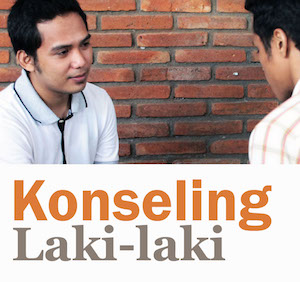In 2015, Rosie Batty, founder of the Never Alone Foundation, was awarded Australian of the Year. This brought the issue of family violence into the forefront of public and political discourse. Rosie believes that within Australia, ‘family violence is still epidemic and it will be for some time. It is a serious abuse of human rights in our advanced and privileged culture’1. The Australian Prime Minister, Malcolm Turnbull, has also described domestic violence as a ‘tragic and deadly epidemic’2. Worldwide, intimate partner violence is the most common type of violence against women, affecting 30% of women.Every year in Australia, an average of one woman is killed each week as a result of intimate partner violence and it is the leading preventable cause of death for women under 453. One in three women have experienced physical and/or sexual violence perpetrated by someone known to them4. Around one in five Australian women and one in twenty Australian men have experienced violence at the hands of an intimate partner5. A further issue is that these figures are based on what is known, as an estimated half of all instances of partner violence against men and one-quarter against women remain unreported6.
In terms of attitudes, in a 2014 Australian study, acts of physical abuse, sexual assault and verbal threats towards one’s partner or child were identified as family or domestic violence by over 96% of respondents. Whereas only 64% of respondents to this study recognised other common attempts to establish power and control over a partner or family member as domestic violence. These forms of control include monitoring a partners’ communication or extreme financial restrictions7.
Despite these statistics, the 2015/16 Australian Governments federal budget committed $30 million to domestic violence services8, compared to the Governments investment of $1.2 billion in funding for national security and counter terrorism, building on $1 billion of funding announced last year9. Since the 1978 Hilton Hotel bombing in Sydney, there have been 113 Australian victims of terrorism. That includes Australians killed overseas in terrorist attacks as well as non-Australians killed with Australia10. Using the generally recognised statistics of one women dying each week of intimate partner violence in Australia every year, and not accounting for the fact that numbers have actually dropped, a total of around 1924 women that have died in this time. If the figure was calculated accurately and included the significant proportion of unreported cases, it would certainly be much higher. In this respect, it is evident that Australia needs to prioritise domestic violence as a human security threat within its own borders.
I hope to see a cultural change in Australia that recognises domestic violence as a significant problem within Australia and condemns the attitudes and behaviours that contribute to this issue. There needs to be awareness raising and adequate services that are easily accessible. Education of young people, both boys and girls, of what respectful and healthy relationships look like, and about the process for accessing services is vital. In addition, a general reduction of gender inequality, in terms of economics and by increasing targets for women on government boards and in senior public service roles is also key to cultural change regarding notions of gender within Australia1. []
References
- Davey, M 2016, ‘Rosie Batty: I was Reeling with Raw Grief While Australian of the Year’, Guardian, accessed 26 April, <http://www.theguardian.com/australia-news/2016/jan/25/rosie-batty-i-was-reeling-with-raw-grief-while-australian-of-the-year>.
- Thomas, M & Dunkley, A 2015, Domestic Violence: Budget Review, Parliament of Australia, accessed 26 April <http://www.aph.gov.au/About_Parliament/Parliamentary_Departments/Parliamentary_Library/pubs/rp/BudgetReview201516/DV>.
- Khan, A 2015, ‘Budget 2015: How will the Budget tackle our Domestic Violence Crises’, Yahoo Finance, 11 May, accessed 26 April <https://au.finance.yahoo.com/news/budget-2015--how-will-the-budget-tackle-our-domestic-violence-crisis-012351787.html>.
- White Ribbon, Why is the Work of White Ribbon Important, accessed 26 May <http://www.whiteribbon.org.au/white-ribbon-importance>.
- Relationships Australia 2015, January 2015: Domestic Violence, accessed 26 April http://www.relationships.org.au/what-we-do/research/online-survey/january-2015-domestic-violence
- Thomas, M & Dunkley, A 2015, Domestic Violence: Budget Review, Parliament of Australia, accessed 26 April <http://www.aph.gov.au/About_Parliament/Parliamentary_Departments/Parliamentary_Library/pubs/rp/BudgetReview201516/DV>.
- Government of Australia, 2015 Keeping Australia Safe, Australian Government, accessed 26 April <http://www.budget.gov.au/2015-16/content/overview/html/overview-18.htm>.
- Keane, B 2014, ‘The Real Threat of Terrorism to Australians, By the Numbers’, Crikey, 4 September, accessed 26 April, <http://www.crikey.com.au/2014/09/04/the-real-threat-of-terrorism-to-australians-by-the-numbers>.
About the writer: Bronagh Power is a student of the Departement of International Relation, Wollongong University, Australia







